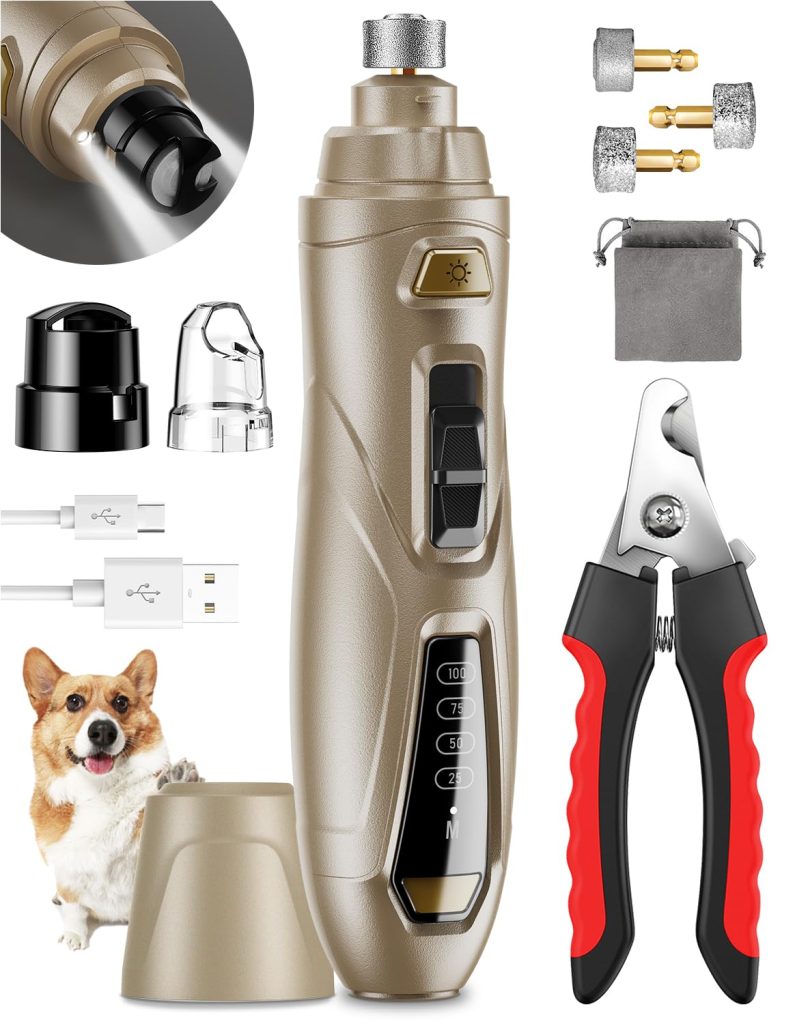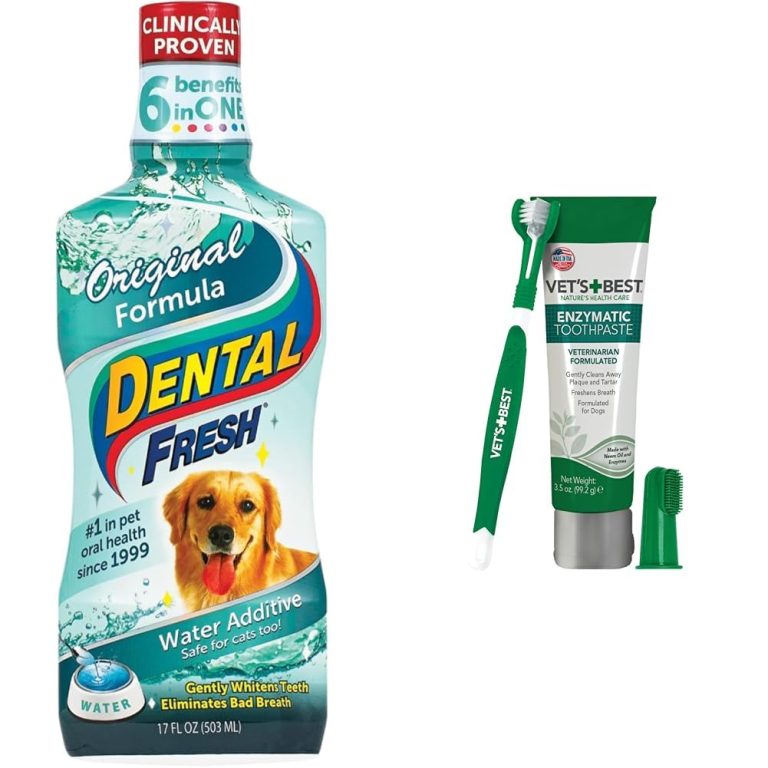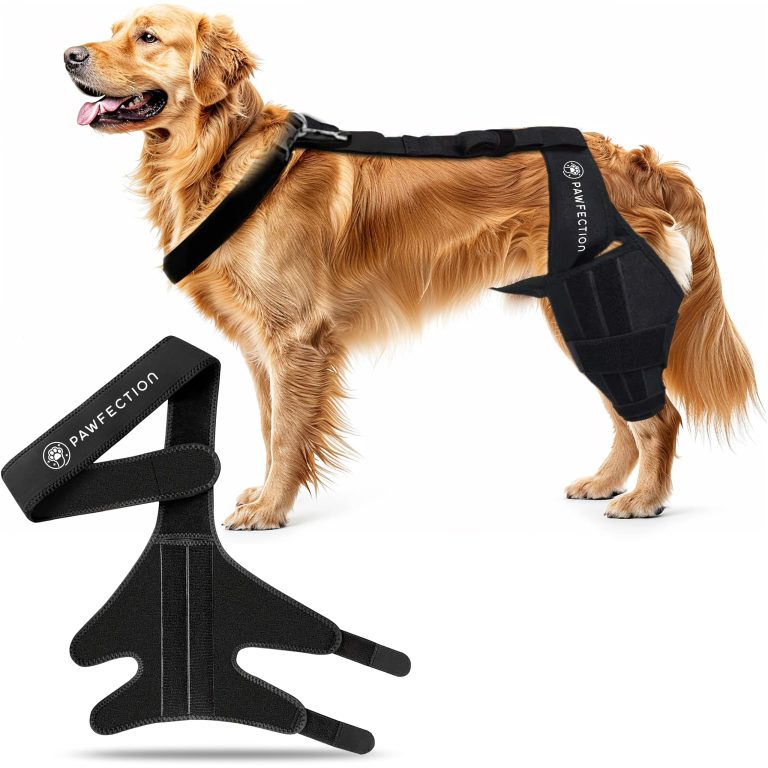Managing Canine Arthritis – Pain Relief and Mobility Tips

Canine arthritis, much like the discomfort that can afflict humans, manifests as a complex amalgamation of inflammation and degeneration within the joints of our cherished companions. This condition, significant in its prevalence among older dogs, often contributes to a disheartening decline in both mobility and quality of life. Typically classified into osteoarthritis, which is the most common form resulting from wear and tear on the joints, and inflammatory arthritis, which may stem from immune-mediated diseases, it presents a multifaceted challenge for pet owners seeking to maintain their dog’s well-being.
Understanding the underlying causes of canine arthritis is essential, as it can often be associated with previous injuries, genetic predispositions, obesity, or even age-related changes in joint structure. The insidious progression of this condition often remains unnoticed initially; however, as the cartilage within the joints begins to erode, the result is increased friction between the bones, leading to both physical discomfort and visible changes in behavior. It isn’t uncommon for a previously energetic dog to display diminished enthusiasm for play, or for a once-enthusiastic leaper to struggle with stairs—indicative of the rampant pain that accompanies canine arthritis.
In addressing the nuances of arthritis, one must also think the vital role of weight management. A dog carrying excess weight not only aggravates the mechanical stress on joints but also contributes to systemic inflammation. Implementing a structured diet alongside gradual and appropriate exercise can be a game-changer. For example, engaging your dog in low-impact activities, such as swimming or leash walks on soft surfaces, can promote joint health while minimizing strain.
Recognizing early symptoms, such as stiffness after rest, a noticeable reluctance to engage in previously enjoyed activities, or even behavioral changes like irritability or withdrawal, can facilitate timely intervention. In cases where you observe your dog favoring a leg or exhibiting difficulty in rising from a prone position, a consultation with a veterinarian is paramount. They can provide a comprehensive assessment and determine if imaging, such as X-rays, is necessary to confirm a diagnosis.
Moreover, it is vital to keep in mind that canine arthritis can coexist with other conditions. For instance, dogs with concurrent dental disease may experience additional discomfort that compounds their overall pain. Thus, regular veterinary visits, thorough dental care, and attention to any changes in demeanor or physicality are indispensable in managing your dog’s health holistically.
Empowerment through knowledge and a proactive approach not only ameliorates the physical symptoms of canine arthritis but also uplifts the emotional well-being of your four-legged friend. As we navigate this challenging path together, remain vigilant, observant, and nurturing, ensuring that every step taken towards alleviating pain simultaneously nourishes the bond you share with your beloved pet.
Symptoms and diagnosis
When it comes to the delicate topic of canine health management, several hallmark indicators suggest that your dog may be experiencing difficulties associated with arthritis or other joint-related ailments. Parental instincts often guide pet owners to monitor their canine companions closely for any signs or behaviors that could indicate underlying distress. Notably, early recognition of such symptoms is not only essential for effective management but also serves to enhance the overall quality of life for your pet.
Common signs of arthritis manifest in various ways, including but not limited to an observable decrease in physical activity levels. Your dog may begin to exhibit reluctance when it comes to engaging in walks, playing fetch, or even routine activities such as climbing stairs. This apparent disinterest can evolve into outright avoidance, as those activities that once brought joy become sources of discomfort. It’s essential to differentiate between mere age-related laziness and a genuine aversion rooted in pain.
Behavioral changes can also be a telling indicator of discomfort. Increased irritability, a propensity for withdrawal, or even growling when approached can signal that your dog may be experiencing pain that they cannot articulate. Observing your dog in various settings—amongst family members, during playtime, or while at rest—can reveal these subtle shifts in behavior. Additionally, the body language of a dog in discomfort is often characterized by protective postures, such as holding a leg up, avoiding weight bearing, or frequently shifting positions in an attempt to alleviate discomfort.
As you embark on the path of diagnosis, consultations with a qualified veterinarian are paramount. The process often begins with a thorough physical examination wherein the vet will palpate the joints, checking for swelling, abnormal warmth, or fluid accumulation. Imaging techniques such as X-rays or MRIs may be recommended to ascertain the extent of joint degeneration or concurrent conditions that may exacerbate the pain experienced by your dog. Understanding the multifactorial nature of these health issues; it’s often possible to uncover other conditions such as hip dysplasia, which may align with the observed symptoms. Just as in humans, the complexity requires a comprehensive approach to care and attention.
Another equally vital consideration relates to dental health, which can profoundly impact a dog’s overall wellbeing. Canine dental disease, often underestimated, can lead to pain radiating through the body, diminishing appetite, and exacerbating behavioral changes relating to discomfort. Regular dental check-ups and maintenance are not merely adjuncts—they are essential components of a broader health management strategy. Ensuring good oral hygiene can significantly mitigate one source of pain, allowing your dog to focus more on their joint health.
In this journey of symptom surveillance and diagnosis, it’s equally critical to maintain a collaborative dialogue with your veterinary team. Sharing your observations, however minor they may seem—such as a change in water intake, bathroom habits, or sleeping patterns—can yield insights that might lead to swift and effective intervention. A shared responsibility in this endeavor nurtures a cohesive partnership committed to the optimal health and longevity of your beloved companion.
Moreover, fostering an environment where your dog feels safe and supported can significantly influence their ability to cope with discomfort. Consider integrating a soft bed in their resting area to ease the physical strain of lying down, or engaging them in mentally stimulating activities that do not impose physical constraints. Puzzle toys or gentle grooming sessions can serve as wonderful distractions while also promoting mental agility.
Through vigilant observation and timely action, we can ensure that our four-legged friends navigate their golden years with as much comfort and joy as possible. Each dog has a unique personality and set of needs; thus, the journey toward health management necessitates a tailored approach that celebrates their individual essence while addressing their specific challenges.
Pain relief options
When it comes to alleviating the discomfort associated with canine arthritis, a multifaceted approach combining various pain relief options can greatly enhance your dog’s quality of life. Understanding the array of available strategies empowers pet owners to tailor interventions that best suit their dog’s unique needs and circumstances. This journey begins with consulting your veterinarian to formulate a holistic pain management plan based on your dog’s specific diagnosis, age, size, and overall health profile.
Pharmaceutical interventions are often the first line of defense in managing pain and inflammation associated with arthritis. Non-steroidal anti-inflammatory drugs (NSAIDs) such as carprofen and meloxicam have become staples in veterinary medicine, offering anti-inflammatory effects while providing much-needed relief from pain. However, vigilance is crucial; these medications can carry side effects, particularly concerning long-term use. Regular veterinary check-ups become indispensable when a dog is placed on such treatments, ensuring that liver and kidney functions are monitored and that any signs of adverse reactions are promptly addressed.
In addition to traditional medications, there are also many alternative therapies that hold promise in managing arthritis-related pain. Acupuncture, a practice rooted in traditional Chinese medicine, has garnered attention for its potential to promote pain relief and improve mobility in dogs. This technique, involving the insertion of fine needles into specific body points, is believed to stimulate the nervous system and encourage the release of endorphins, the body’s natural painkillers. Likewise, hydrotherapy—exercising in water—offers a low-impact alternative that reduces strain on joints while allowing dogs to maintain strength and fitness.
Weight management cannot be overstated in this context, as excess pounds contribute significantly to joint stress and exacerbation of symptoms. Implementing a balanced diet that considers your dog’s caloric needs, along with incorporating high-quality protein and omega-3 fatty acids—which have anti-inflammatory properties—can play an integral role in managing arthritis. Consulting with a veterinarian or a canine nutritionist can provide tailored dietary recommendations and guide portion control to ensure weight loss occurs safely and effectively.
Topical treatments, such as creams and gels infused with anti-inflammatory properties, also warrant consideration. These products, designed to be massaged gently into the affected joints, may provide localized relief, ensuring that our pets experience as much comfort as possible through targeted applications. Furthermore, joint supplements containing glucosamine and chondroitin sulfate have become widely regarded for their potential to support joint health, easing the symptoms of arthritis and promoting better mobility. While these supplements may take time to manifest their benefits, they can serve as a cornerstone in a comprehensive pain management regime.
Your dog’s environment can also substantially impact their pain levels and mobility. Making thoughtful adjustments to their living space can foster both physical ease and emotional comfort. For instance, ensuring easy access to their favorite resting spots is important; consider the inclusion of ramps or pet stairs to mitigate the strain associated with jumping. The use of orthopedic dog beds can also provide the necessary support to alleviate pressure on aching joints, encouraging restorative sleep and well-deserved rest.
Moreover, the mental well-being of your dog should not be overlooked in your pain management strategy. Engaging in activities that stimulate their minds can divert their focus from discomfort while also serving to strengthen your bond. Puzzle toys, gentle empathy-based training, or simply exploring new scents on leisurely walks can enrich their daily experiences. Maintaining a routine that includes moments of fun and enriching activity can help to lift their spirits, even when physical limitations exist.
With the right mix of veterinary guidance, appropriate medication, lifestyle adjustments, and emotional support, managing canine arthritis becomes a more manageable undertaking. By addressing both the physical and emotional aspects of pain, pet owners can enhance not just the well-being of their four-legged companions but also the treasured bond shared with them—reminding us that our attentiveness and love can spark moments of joy amidst the challenges of aging and discomfort.
Mobility enhancements
Enhancing mobility in dogs affected by arthritis is critical for promoting their independence and overall well-being. Thoughtfully planned mobility enhancements can help alleviate discomfort while enabling your dog to maintain an active lifestyle. Recognizing the unique physical limitations imposed by arthritis, it becomes essential to embrace a multifaceted approach that not only accommodates but also empowers your dog to remain active in a safe and supportive manner.
One of the most effective ways to improve mobility is through tailored exercise regimens. While excessive or high-impact activities may exacerbate joint pain, gentle, low-impact exercises can be immensely beneficial. For instance, swimming is an excellent option, as water buoyancy alleviates the burden on aching joints while allowing for increased range of motion and muscle strengthening. Moreover, gradual leash walks on soft, even surfaces can promote cardiovascular health without imposing undue stress on their joints. A structured routine, ideally encompassing diverse activities, can foster not only physical prowess but also mental stimulation, as dogs enjoy exploring new environments.
Incorporating assistive devices can significantly enhance your dog’s mobility as well. Specialized harnesses or slings, designed to support your dog’s frame, can reduce the strain of standing or walking. These devices can be especially beneficial when navigating stairs or transitioning from sitting to standing positions. Additionally, ramps or pet stairs can diminish the impact of jumping onto furniture or entering a vehicle, facilitating independence while safeguarding against painful exacerbations. Implementing these tools creates an accessible environment that allows your dog to move freely without escalating their discomfort.
Regular veterinary check-ups play an invaluable role in ensuring that your dog’s mobility enhancements are effective and appropriate for their evolving needs. A veterinarian can evaluate the degree of joint degeneration, recommend specific therapeutic exercises, and even suggest modifications to existing routines. For instance, the introduction of physical therapy can yield impressive results, allowing trained professionals to reinforce mobility through curative exercises tailored to your dog’s condition. Techniques such as massage therapy can also alleviate stiffness and stimulate blood flow, further supporting healthy joint function.
In addition, customizing your dog’s living environment can significantly impact their mobility experience. Create a tranquil space with soft flooring materials, like carpets or area rugs, to prevent slipping. Well-placed mats can provide stability, making your home a safe haven where your dog can navigate without fear of injury. Designated areas with easy-to-reach toys will also encourage play while sparing your dog the need to traverse uneven surfaces or stairs excessively.
Working on maintaining and strengthening your dog’s core and leg muscles is another vital component of disability enhancement. Engaging them in exercises that promote stability—such as controlled sit-stands or platform balancing—can build strength without exhausting them. Resistance bands can also be incorporated into their regimen under the guidance of a veterinarian or certified canine physical therapist; they can create a fun, engaging challenge while ensuring safety during workouts.
Mental stimulation is equally integral to enhancing mobility, as a stimulated mind fosters a more positive outlook on physical limitations. Interactive games, scent work, or engaging training sessions can distract from pain while concurrently maintaining mental sharpness. Consider enhancing your dog’s environment with toys that encourage independent exploration or puzzles that require problem-solving skills. These activities infuse joy into their daily lives, encouraging them to stay active without compound stress on their joints.
As we forge onward in optimizing the mobility of dogs facing the challenges of arthritis, our focus should remain firmly rooted in their comfort and emotional well-being. Building a foundation of practical solutions—paired with unwavering love and support—will help your four-legged companions reclaim a sense of agency. Remember, your active participation and observant care can transform not merely their physical capabilities but also fortify the precious bond shared between you and your beloved pet.
Preventative care strategies
Preventative care in canine health encompasses a broad array of strategies aimed at enhancing the quality of life and longevity of our furry companions. By prioritizing these methods, pet owners can mitigate the effects of age-related health changes and common ailments while fostering a proactive approach that preserves vitality and happiness. A holistic view of your dog’s health must include not only physical care but also mental stimulation and preventative measures that address potential health issues before they manifest into serious conditions.
Engaging in routine veterinary check-ups lays the foundational stone for preventative care. Annual visits ensure that your dog receives necessary vaccinations, dental cleanings, and health screenings tailored to their age, breed, and lifestyle. Early detection of potential health issues, such as heart disease or diabetes, allows for timely intervention that can significantly alter the course of your dog’s health. For example, certain breeds are predisposed to specific conditions, and being vigilant about their health can aid in recognizing symptoms that may otherwise go unnoticed.
Exercise remains a cornerstone of canine wellness, and its importance cannot be overstated. Regular physical activity not only helps maintain an optimal weight, reducing stress on joints, but also promotes cardiovascular health and mental well-being. Tailoring your dog’s exercise routine to include varied activities—such as leash walks, games of fetch, and agility training—can ensure that they remain physically fit while also engaging their minds. Importantly, age-appropriate modifications to exercise regimens are essential, as older dogs may require gentler activities to prevent overexertion. Even in their advancing years, dogs can thrive with activity levels adjusted to their capabilities.
Addressing dental care is equally critical, as oral health issues can lead to systemic problems that impact overall health. Regular dental check-ups are just as vital as vaccines, helping to identify early signs of periodontal disease, which can result in severe pain, tooth loss, and even infection that spreads through the bloodstream. Facilitating good oral hygiene at home through daily tooth brushing—where possible—and providing dental treats can be a proactive measure against dental disease. As the old adage goes, “A healthy mouth leads to a healthy dog,” emphasizing the importance of this often-overlooked aspect of canine health.
Moreover, mental stimulation should be woven into the fabric of your dog’s daily life. Canines, much like humans, thrive on cognitive challenges that keep their brains active and engaged. Incorporating puzzle toys, teaching new tricks, or even practicing nose work can ignite curiosity and prevent boredom, which is often a precursor to behavioral issues. Regular enrichment ensures your dog remains mentally sharp and emotionally balanced, particularly as they age.
Maintaining a healthy weight is paramount in preventative care, especially in dogs predisposed to joint issues such as arthritis. Implementing a balanced diet, rich in high-quality protein and essential fatty acids—specifically Omega-3s—can help reduce inflammation while promoting overall joint health. Portion control is vital, and treats should be given sparingly; opting for healthy snack alternatives allows for indulgence without unnecessary weight gain. Your veterinarian can assist with dietary assessments and recommendations tailored to your dog’s individual needs, often leading to a tailored feeding plan that aligns with their activity levels and health goals.
In addition, fostering a safe and nurturing environment at home contributes significantly to your dog’s health management. Providing easy access to their favorite resting areas, installing non-slip mats, and ensuring that their living space is free of hazards can drastically reduce the risk of injury, particularly for older dogs who may be prone to slips and falls. Ergonomic adjustments, such as elevated food and water bowls, can also aid pets with joint issues or arthritis, minimizing the strain they may experience while eating or drinking.
Finally, establishing a routine that integrates regular physical and mental health assessments contributes to proactive care. Observing changes in behavior, appetite, or activity levels can provide early warning signs of underlying health issues. Keep a journal of notable shifts—however small they may seem—such as unusual pacing, reluctance to play, or dietary preferences. Sharing these insights with your veterinarian can influence critical decisions regarding preventative health strategies, allowing for a tailored, responsive approach to your dog’s ever-evolving needs.
As you invest in preventative care practices, you not only protect the physical health of your canine companion but also nurture their emotional and mental wellness. With mindful attention to their holistic needs, you can create an enriching environment where love flourishes, and health maintains its rightful place at the forefront of your shared journey.







